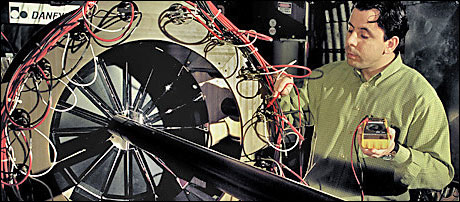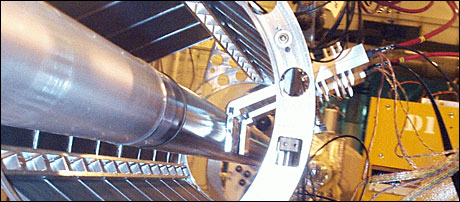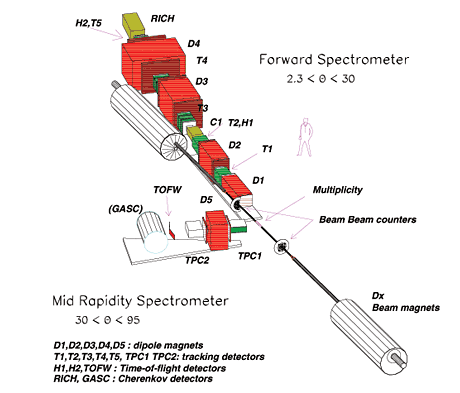




PHOBOS and BRAHMS Detectors
PHOBOS Detector

The PHOBOS experiment was based on the premise that interesting collisions are rare, but that when they do occur, new physics are readily identified. Thus the PHOBOS detector was designed to examine and analyze a very large number of unselected gold ion collisions. For each collision, the detector gives a global picture of the consequences of the collision and detailed information about a small subset of the nuclear fragments ejected from the high energy-density region.
PHOBOS consisted of many silicon detectors surrounding the interaction region. With these detectors, physicists are able to count the total number of produced particles and study their angular distribution. With this array they look for unusual events, such as fluctuations in the number of particles or angular distribution. Physicists know from other branches of science that a characteristic of phase transitions is a fluctuation in observable events. In order to obtain more detailed information about these events, the PHOBOS detector also has two high-quality magnetic spectrometers which will study one percent of the produced particles in detail.
The PHOBOS detector was able to measure quantities such as the temperature, size, and density of the fireball produced in the collision. It also studied the ratios of the various particles produced. With this information it should be possible to both detect and study a phase transition that might occur between quark-gluon plasma and ordinary matter.
BRAHMS Detector

The BRAHMS experiment was designed to measure charged hadrons over a wide range of rapidity and transverse momentum to study the reaction mechanisms of the relativistic heavy ion reactions at RHIC and the properties of the highly excited nuclear matter formed in these reactions. The experiment took its first data during the RHIC 2000 year run and completed data-taking in June 2006.

